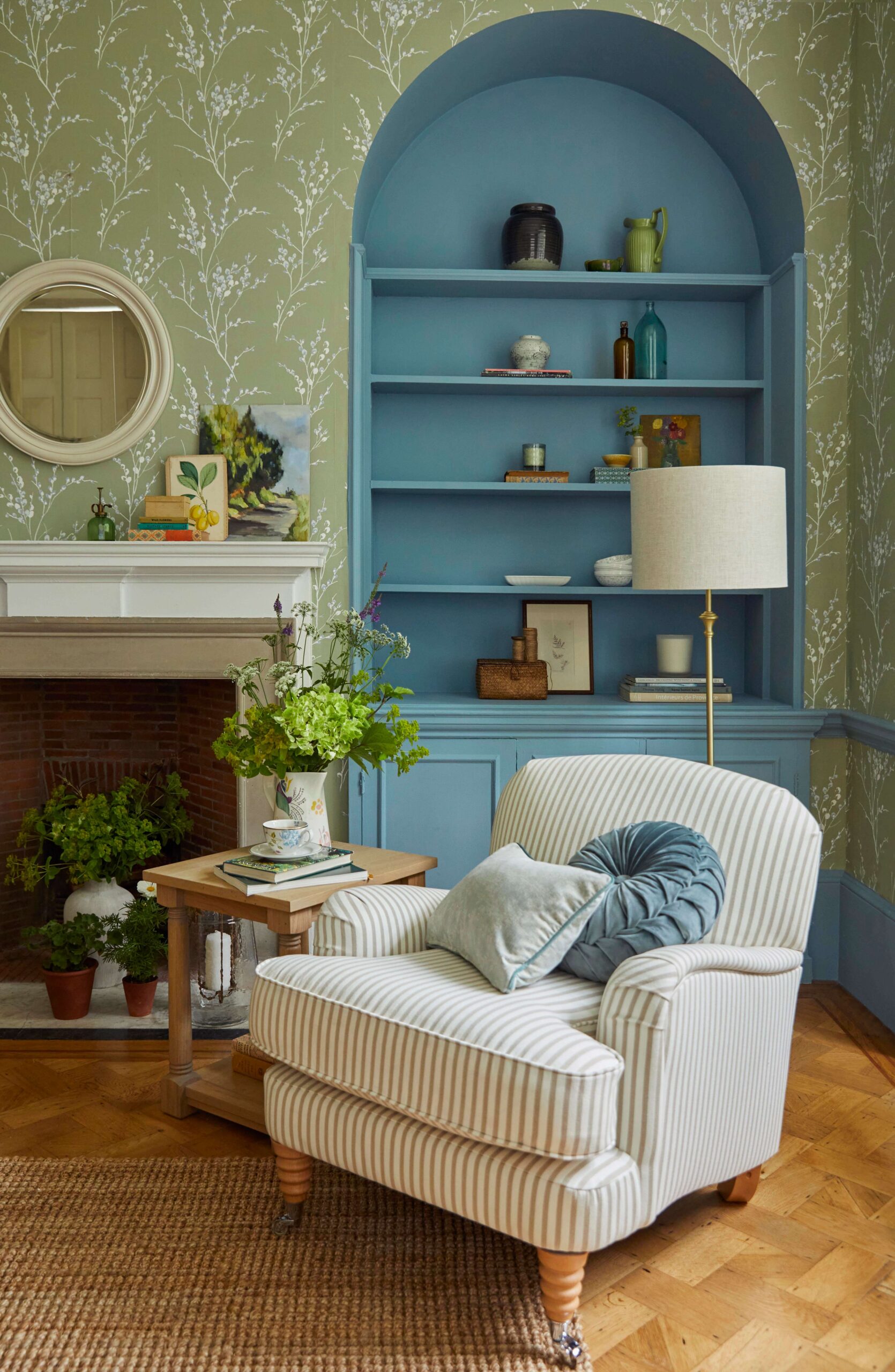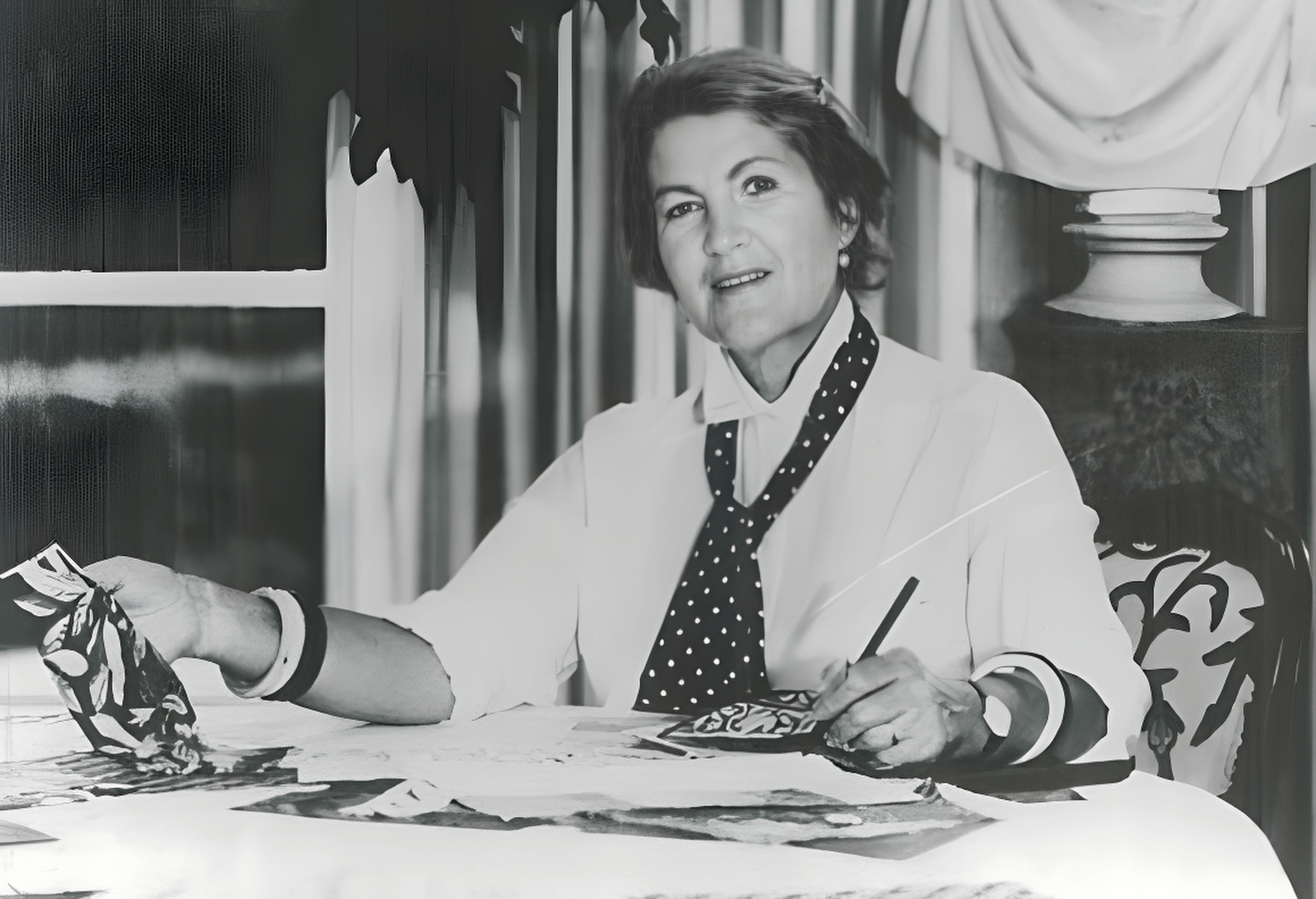The enduring romance of Laura Ashley
A trailblazer of romantic interiors and floral fashion, Laura Ashley defined an era of British design with her unmistakable style. We revisit her legacy and how her timeless prints and pastoral charm continue to inspire a new generation
Think floral print, romantic interiors and cottagecore and the name that probably first springs to mind is Laura Ashley. Few brands in British design evoke quite as much nostalgia, quiet elegance and an instant image of what a room decorated in florals looks like. From its modest post-war beginnings to becoming a global symbol of femininity and country charm, Laura Ashley was never merely a brand, but a lifestyle. For decades, its quintessential prints, chintz and soft silhouettes defined an aesthetic deeply rooted in tradition, yet innovative and groundbreaking.
In 1953, Laura Ashley, a Welsh-born secretary and part-time fabric printer, began designing small runs of printed textiles from her kitchen table in Pimlico, London, inspired by a Women’s Institute exhibition on traditional handicrafts and a lifelong affection for Victoriana. Alongside her husband Bernard Ashley and an investment of £10 in wood for a screen, fabric and dyes, they began printing their distinctive designs, using techniques learned from library books. The following year Bernard engineered his first continuous printing machine to sell fabric by the yard, and they produced their first tea towels – the whole collection of which was bought by a company in San Francisco.

From the outset, the Ashleys’ vision was clear: a return to romanticism and nature, in direct contrast to the modernism of post-war Britain. Their earliest textiles drew from 19th-century patterns, filled with sprigs, trailing vines and in soft palettes. These were not ironic or retro nods, but heartfelt tributes to an aesthetic ideal, one that celebrated domesticity, femininity and the quiet beauty of rural life.
By the 1960s, as countercultural movements swept through the Western world, Laura Ashley’s style found a ready audience. The burgeoning interest in craft, folk art, and anti-industrial design gave her florals new meaning. No longer just quaint, they became expressions of authenticity and rebellion against the impersonal urban uniform. The brand’s aesthetic married English nostalgia with contemporary cool.

In 1961, the Ashleys moved their operations first to Kent and later to Laura’s birthplace Wales, revitalising a former railway station to house their factory. The relocation wasn’t just logistical, but symbolic. The move tethered the brand to its rural roots, embedding its ethos within the Welsh landscape. As their business grew, so did their reach – they eventually had 180 stores worldwide from New York to Tokyo – but Laura Ashley never abandoned their founding vision of thoughtful, handcrafted design.
Laura Ashley dresses – long, flowing, with puffed sleeves, high necks and delicate detailing – became iconic in the 1970s. Part of the Little House on the Prairie wave, the brand’s clothing captured the hearts of women who wanted more than polyester and synthetic shapes. These garments, often made from natural cotton, were as romantic as they were practical. Wearing one felt like stepping into a Pre-Raphaelite painting, via your local high street.

The 1980s marked the zenith of the Laura Ashley empire. With furniture and homeware joining the brand’s growing clothing and accessories range, homes were soon wrapped in the same floral fantasy. Curtains, upholstery, wallpaper and ceramics adorned houses across Britain and beyond. The first-ever Laura Ashley catalogue, The Decorator Collection of Home Furnishings, was introduced in 1981 and printed in English, French, German and Dutch. A Laura Ashley home was one of comfort and charm – layered, lived-in and lovingly curated. A vision for how life could look. But sadly, Laura herself passed away in 1985, after a fall in her daughter’s Cotswolds home.
By the late 1990s, the tides of taste had shifted. The rise of minimalism and sleek modernity left little room for chintz. Laura Ashley struggled to reinvent itself in a world moving faster and dressing sharper. Financial troubles followed, and the brand passed through several ownerships, each trying to rekindle the old flame without quite capturing its original magic. But despite its commercial struggles, the Laura Ashley name never faded from public affection. Its enduring influence is plain to see in today’s cottagecore revival and the resurgence of vintage homes. Indeed, Gen Z’s fascination with floaty dresses, dried flowers and pastoral Instagram aesthetics owes a considerable debt to the world that Laura Ashley created half a century ago.
In 2020, amid the pandemic, the company filed for administration – a sad moment for a brand that once epitomised British domestic bliss. Yet, from the ashes came new life. In recent years, collaborations with high-street retailers such as Next and Marks & Spencer have brought Laura Ashley back into the limelight, not to mention the enduring popularity of the brand in the US. Rather than chasing trends, these new ventures honour the brand’s heritage, reissuing classic prints and designs with respectful modernisation.
Today, vintage Laura Ashley clothing has become coveted – stitched with memories and meanings. Similarly, original furnishings and textiles (find vintage pieces at Karen Morgan’s Laura Absolutely ebay store ebay.co.uk/str/lauraabsolutelyvintage) are ever-popular among those who appreciate the craftsmanship and ethos they represent. At its heart, Laura Ashley’s story is not just about floral prints or tea dresses. It’s about a vision of life that prioritised beauty, craftsmanship and simple innocence – something we all are hankering after right now in 2025. It was a brand built not on seasonal whims, but enduring values. In an age increasingly detached from nature and permanence, the quiet romance of Laura Ashley feels more valued than ever.
Before you go...
...fancy automatic entry to all future competitions?
Simply register online today for FREE and you will get:
Automatic entry to all current and future competitions.
Access to Reclaim Inspiration - an online visual pinboard for saving all your home and style inspiration.
A regular newsletter of inspiration, ideas and advice.

Save all your articles in one place
Become a Reclaim Member to save all your home and style inspiration. Simply login or register online today for FREE and you will get:
Automatic entry to all current and future competitions.
Access to Reclaim Inspiration - an online visual pinboard for saving all your home and style inspiration.
A regular newsletter of inspiration, ideas and advice.








